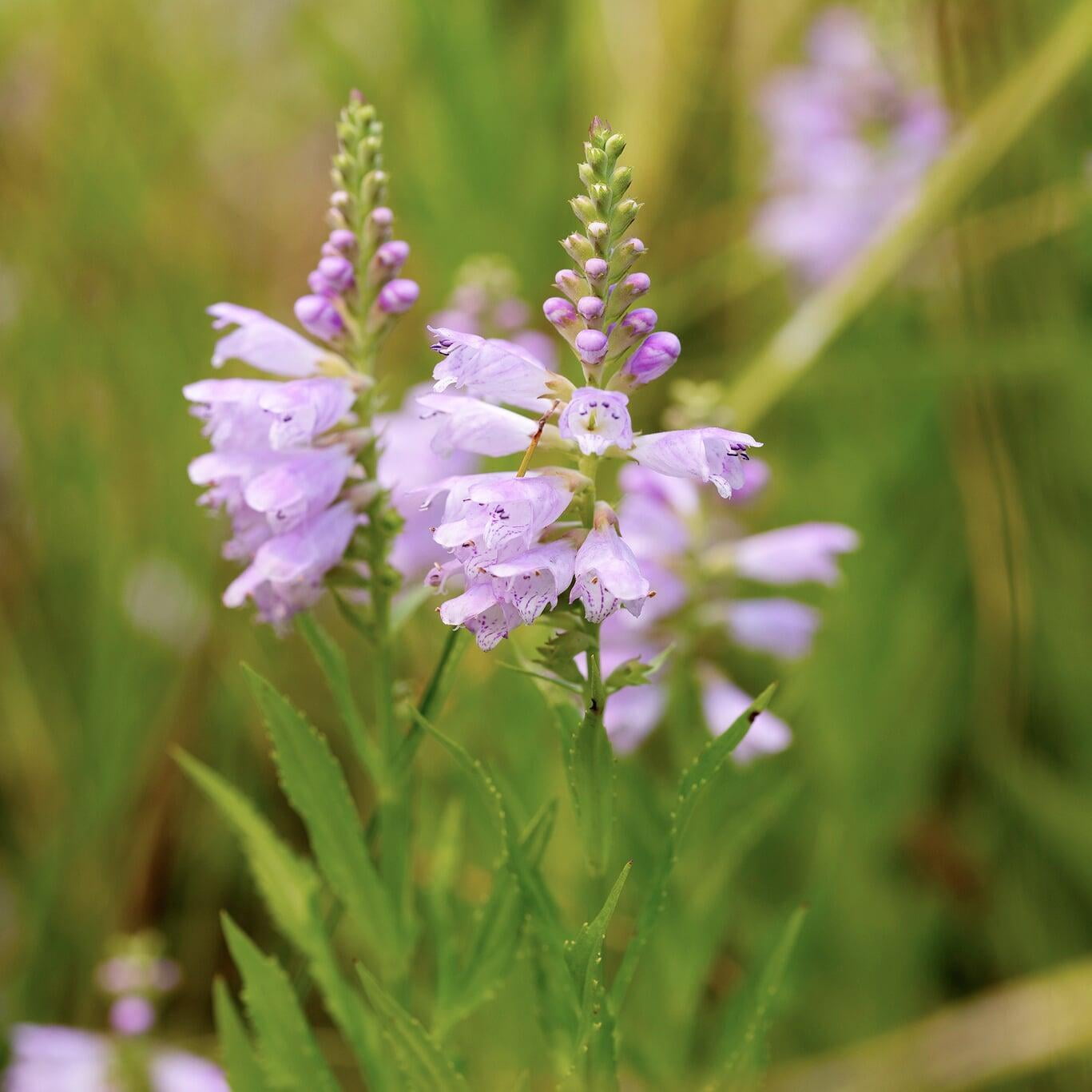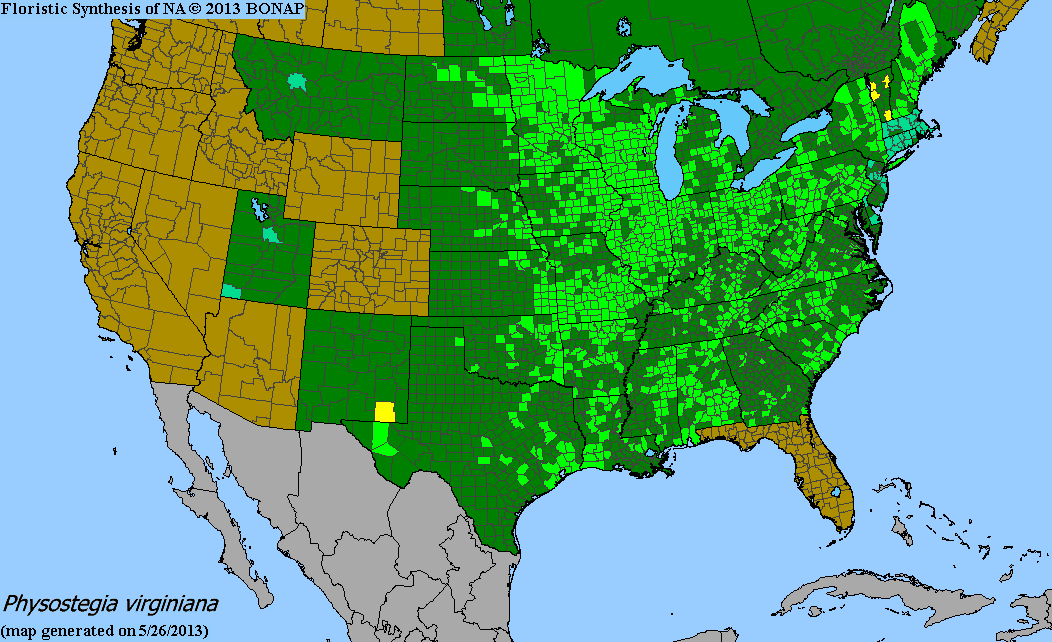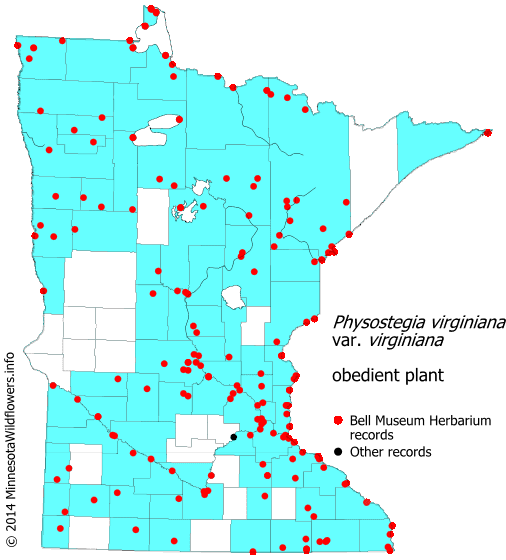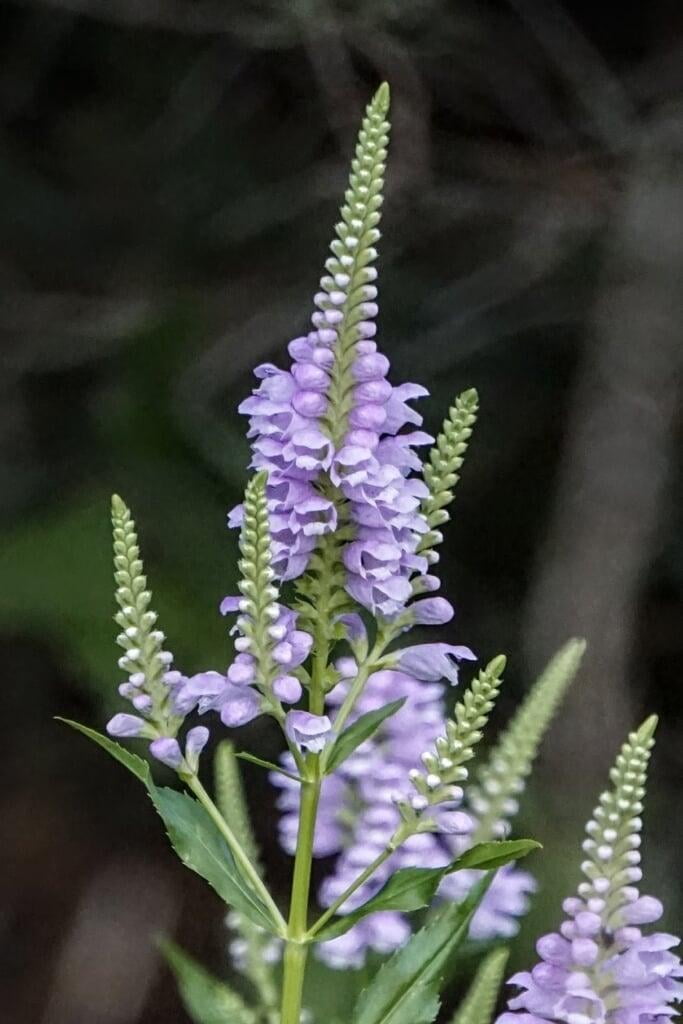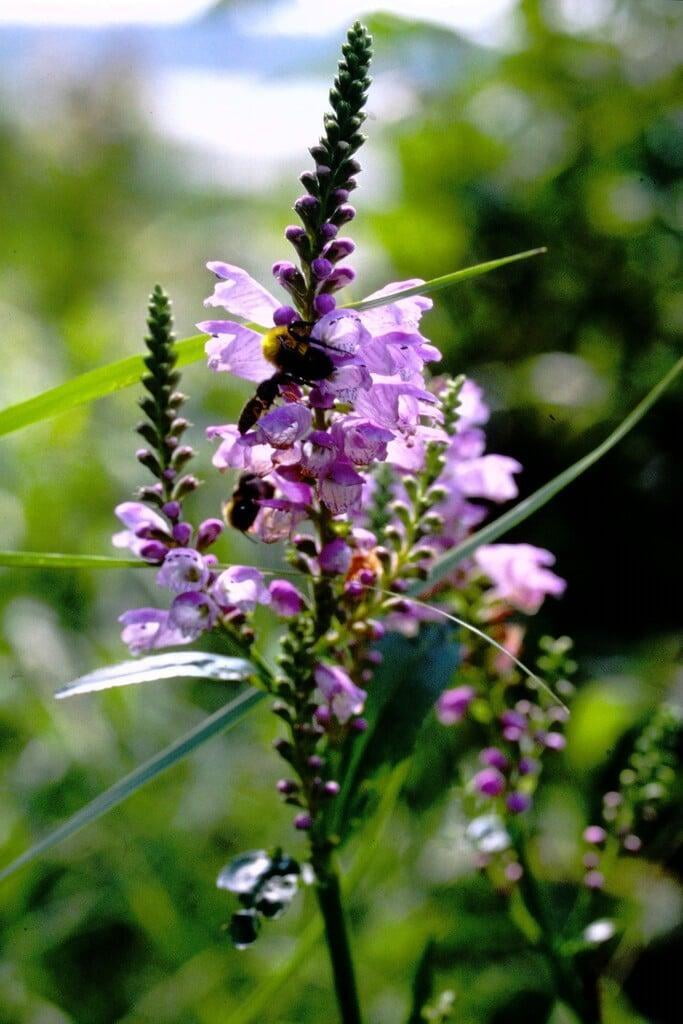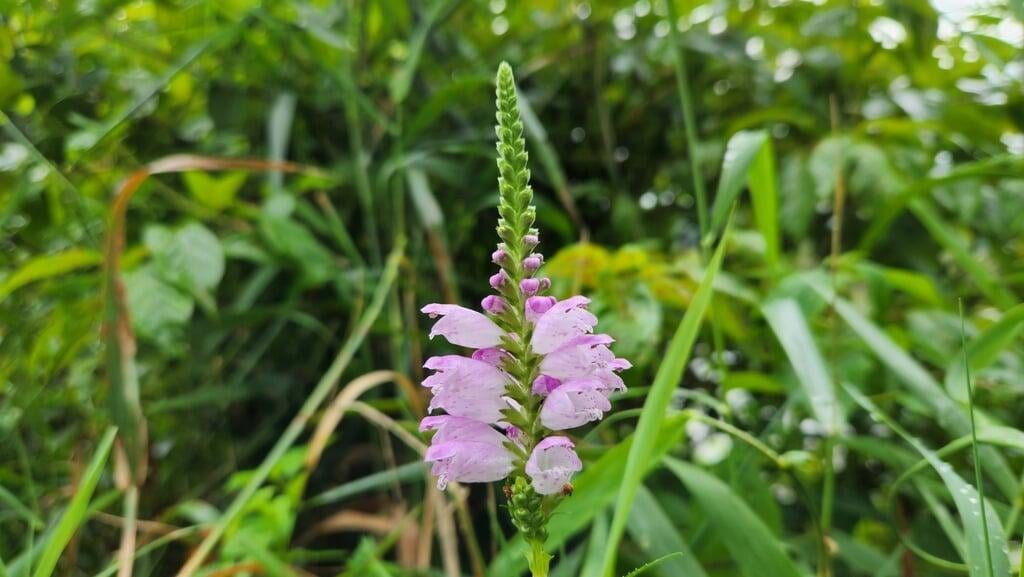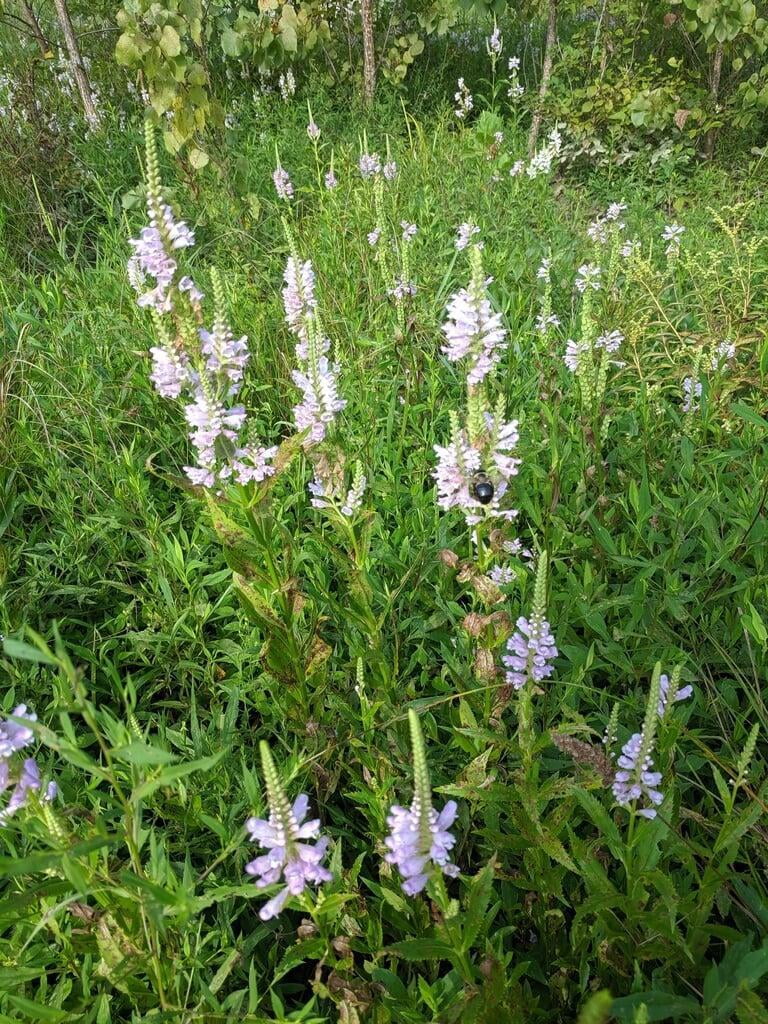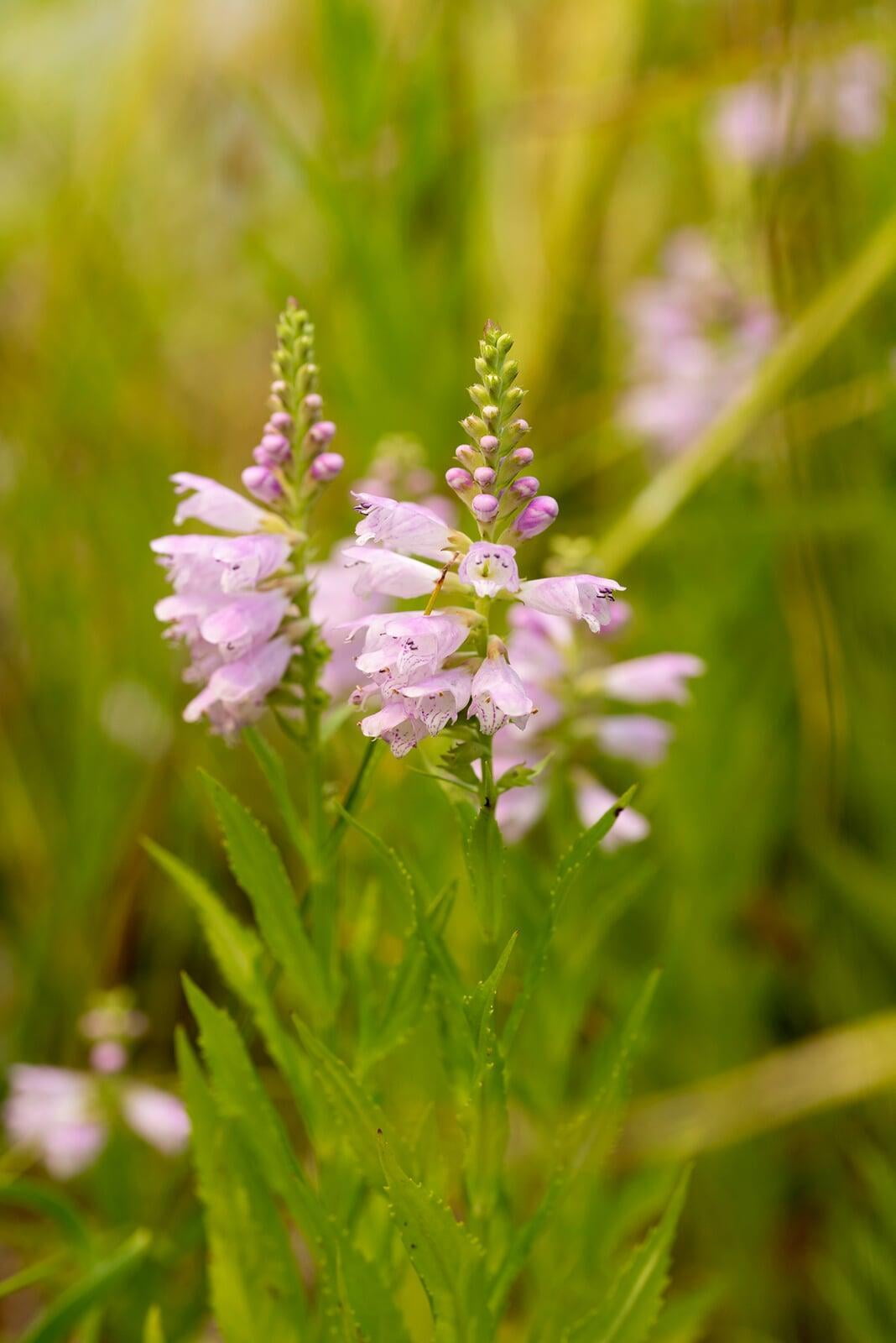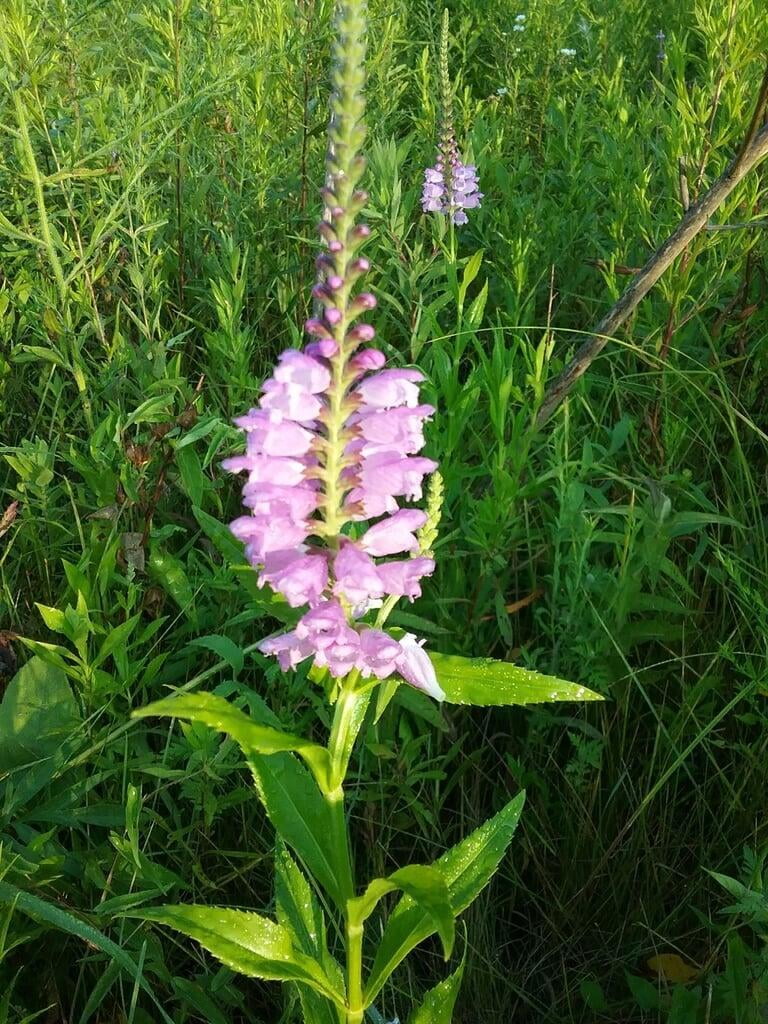Physostegia virginiana
Obedient plant Description:
Physostegia virginiana, commonly known as obedient plant, is a herbaceous perennial plant in the mint family, Lamiaceae. It is native to North America and can be found in prairies, meadows, and open woods from the Great Plains to the eastern coast of the United States. The plant typically grows up to 1 to 4 feet tall and blooms in late summer with showy spikes of pink, white, or purple flowers. The flowers are unique in that they remain in position after being moved, hence the common name "obedient plant". The leaves are lance-shaped and toothed. Physostegia virginiana is an important plant for pollinators, providing nectar and pollen for bees, butterflies, and other insects. It is also used in wildflower gardens and prairie restoration projects to help establish native plant communities.
Native Range:
Obedient plant is most commonly found growing natively in the central and Eastern United States. It does span as far west as Montana.
Standard Plant Information:
Plant Height: 1' - 4'
Bloom Time: August - October
Preferred Habitat: Does well in part shade to full sun in moist soil. Often found in wet fields or along streams.
Sowing:
For most homeowners, the best option is to scatter seed on the ground by hand broadcasting at a minimum of 16-64 pls ounces per acre. For even coverage, we recommend that you broadcast seed in perpendicular rows across the site to ensure even coverage.
You’ll want to broadcast any grass seed first, which will get raked into the soil lightly. Next, it is ideal to mulch the area lightly with either a clean (no seed) straw or preferably with our native Little Bluestem straw, sold at our retail garden centers. After a light mulching is complete, now it’s time to broadcast your native wildflower seeds, which should not be raked into the soil. A good rain or watering is sufficient to cover the seed.
Planting:
Simply dig a hole in the soil slightly larger than the plant’s roots. Ensure that the soil line of the plant is maintained during the transfer (i.e. the plant should be at the same level with the ground as it was in the pot). Pack any loose dirt back around the plant and make sure you water it well the same day to ensure it has the best chance of survival.

